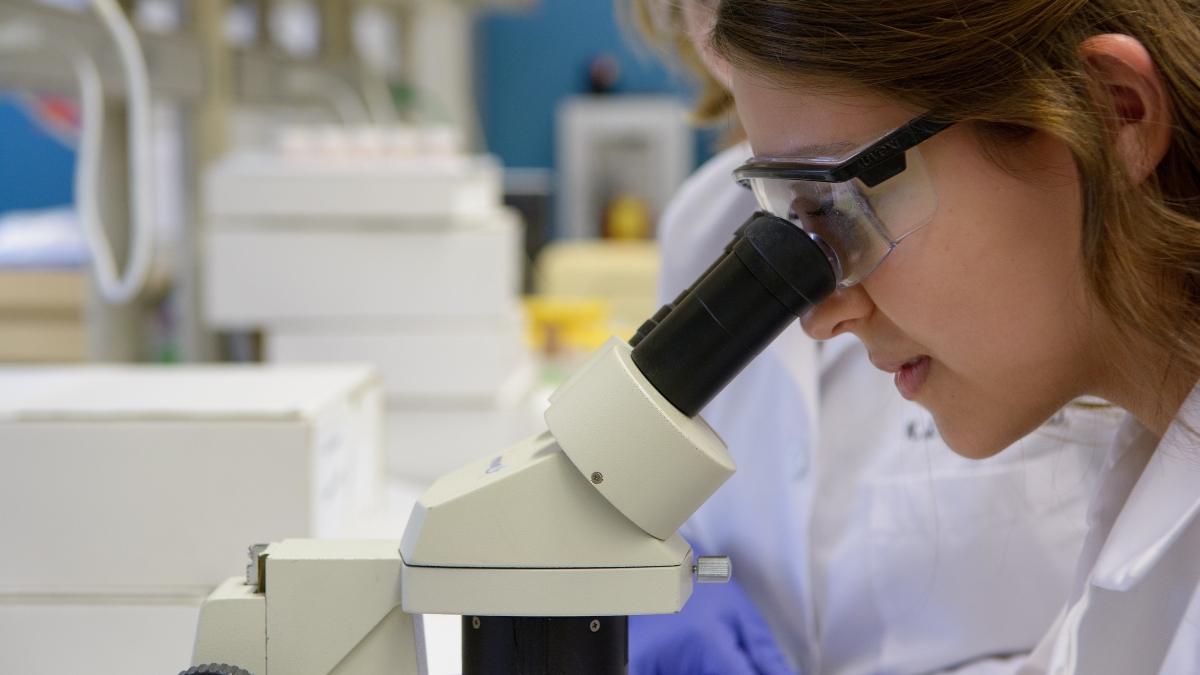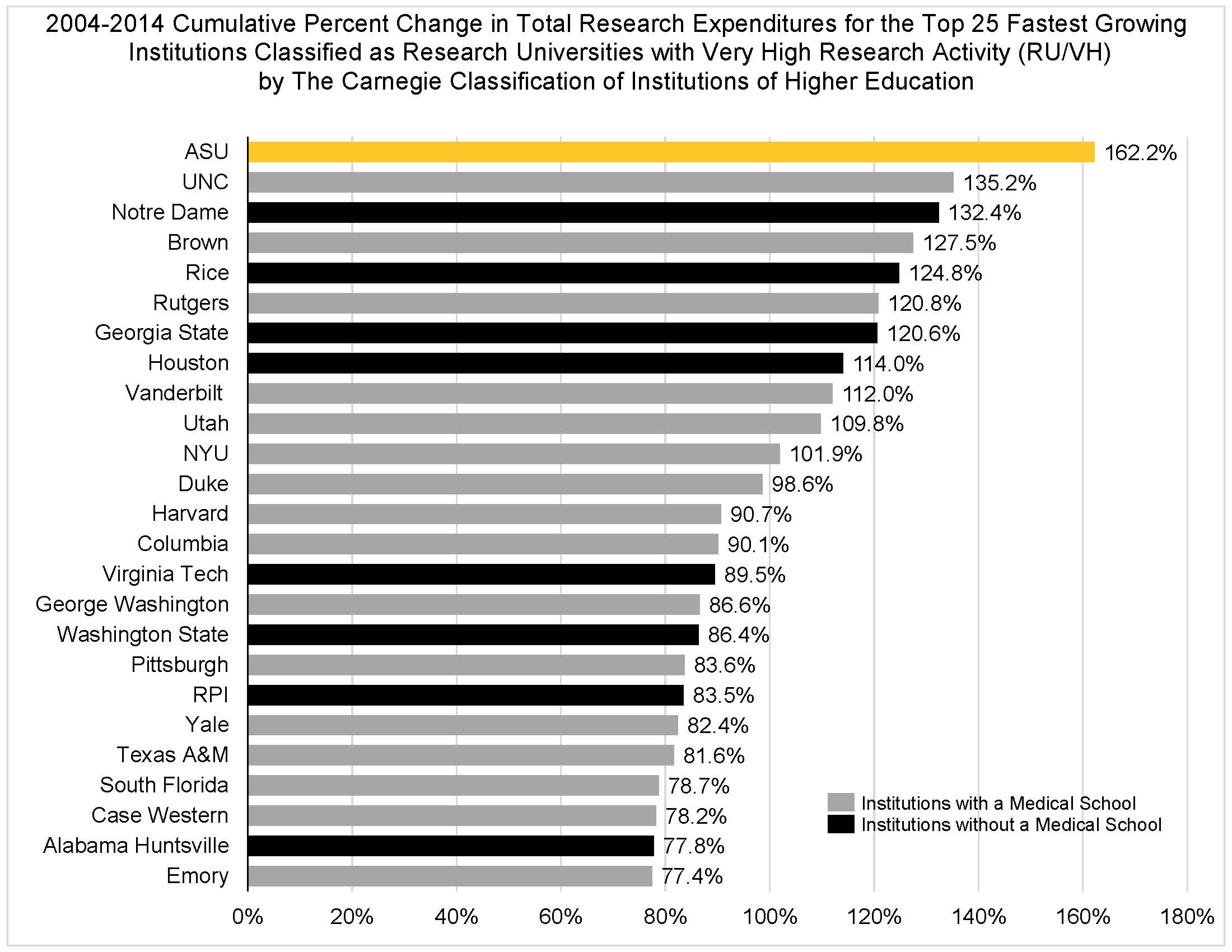From Ebola treatments to renewable-energy advancements to helping protect the world’s water supply, Arizona State University’s researchers are creating innovative ways to approach the world’s pressing issues. And that research is growing.
In the National Science Foundation's latest Higher Education Research and Development (HERD) rankings, ASU’s research expenditures placed it 10th out of 724 institutions without a medical school, ahead of Caltech, Princeton and Carnegie Mellon University.
And in total research expenditures among all institutions, regardless of medical school, ASU is ranked 48th out of 876, ahead of the University of Chicago, Brown and Princeton.
“The rapid rise in ASU’s research rankings are a testament to the fantastic ideas and hard work of our faculty and researchers,” said Sethuraman Panchanathan, executive vice president and chief research and innovation officer at ASU. “Their pioneering ideas and commitment to solving global grand challenges by seamlessly working across disciplinary boundaries have helped ASU become an outstanding environment to manifest superlative talent resulting in societal impact.”
Other highlights from ASU's rankings:
- Earth sciences: 3 out of 354, ahead of Stanford, Berkeley, MIT and Penn State
- Social sciences: 5 out of 486, ahead of Berkeley, Cornell, UCLA and the University of Pennsylvania
- Political science: 5 out of 332, ahead of Yale, Columbia and Duke
- Electrical engineering: 8 out of 285, ahead of the University of Texas at Austin, Stanford and Carnegie Mellon
- NASA-funded expenditures: 11 out of 433, ahead of Stanford, Georgia Tech, UCLA and Texas at Austin
During the 10-year period from fiscal year 2004 through fiscal year 2014, ASU’s total research expenditures grew by a remarkable by 162.2 percent.
Here’s a closer look at those numbers.
The chart above shows the top 25 Research University with Very High Activity (RU/VH) institutions and their percentage change in total research expenditures over those 10 years. ASU had the largest overall percentage change, considerably outpacing the second-fastest-growing institution, the University of North Carolina at Chapel Hill. The majority of the top 25 were institutions with a medical school (gray bars on the chart), with the additional funding opportunities associated with such a school.
The overwhelming majority of RU/VH schools saw less than half the growth of ASU; click here to see a chart visualization of that data. And growth in research expenditures is largely independent of the size of the research enterprise: Click here for a chart that relates each institution’s cumulative growth in total research expenditures over the 10-year period to the level of research expenditures reported by the institution in 2014.
To see a fuller list of individual categories and where ASU came in, click here for a downloadable PDF.
More University news

ASU establishes Center for Free Speech, will host annual free speech forum
Arizona State University is establishing a new Center for Free Speech to encourage the uninhibited exchange of ideas, and the university will launch an annual free speech forum that will begin in…

Public affairs professor, back at ASU after 3 years with NSF, is named Sackton Chair
After three years at the National Science Foundation, Professor Mary Feeney has returned to Arizona State University, where she intends to help early-career women and women of color succeed in…

A decade strong: ASU takes top spot in innovation for 10th year in a row
For the 10th year in a row, Arizona State University is No. 1 in innovation in the newly released annual “Best Colleges” 2025 rankings by U.S. News & World Report — just one of many top rankings…

